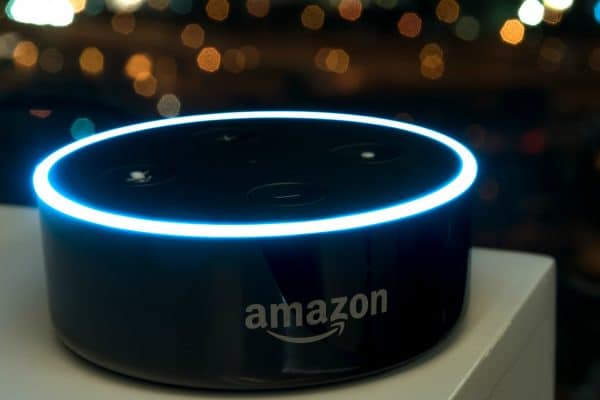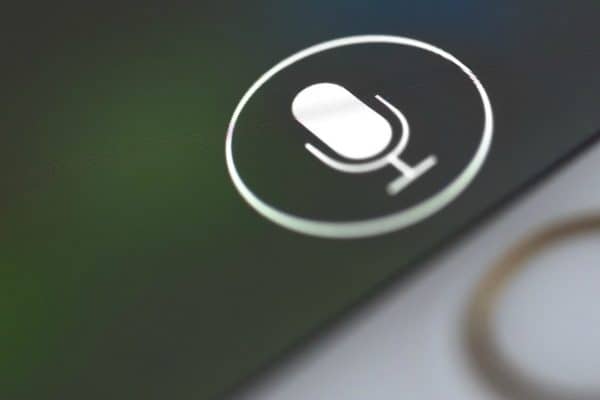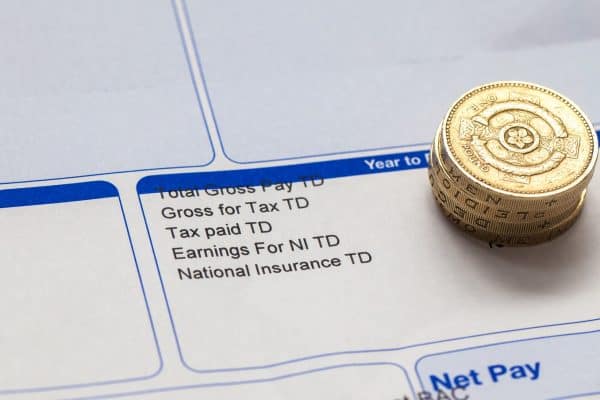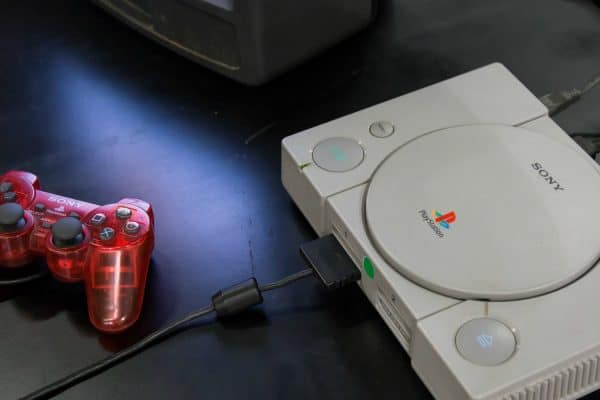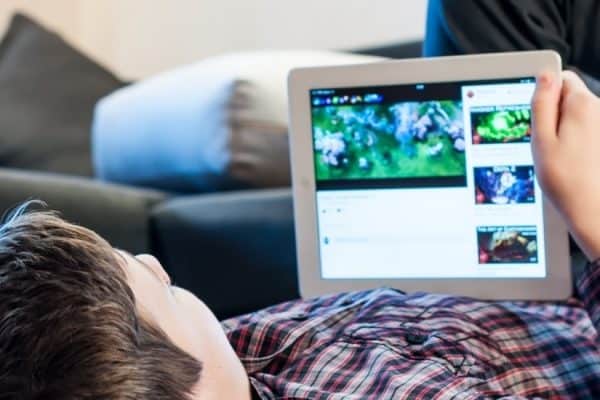It’s official: Novel ways of controlling your home have gone beyond the clapper. Being able to control your home from your phone or tablet used to be a thing of sci-fi movies. But, no longer. The range of gadgets now on offer enable you to do everything from controlling your lights to checking your grocery supplies to cutting power to the iron you accidentally left switched on when you left for work this morning, all from your smartphone.
However, with lots of pros to turning your home into a smart home, it can be expensive. And, if you rent, this can be harder to do. But to help, we’ve gathered some of our favourite tips to make a smart home on a budget. Affordable and renter-friendly too!
What is a smart home?
Essentially, a smart home is a home with smart devices and technology which allows for lights, heating, and electronics to be controlled remotely, either from a device or a mobile phone. Smart homes allow you to control functions through an internet connection or Bluetooth and provide you with convenience as well as cost savings on bills.
Is it worth making a smart home?
While you absolutely don’t have to turn your home into a smart home if you’re not a fan of technology or automation, there are a lot of benefits of having a smart home, including:
- Energy efficiency – smart homes can be great for conserving energy, such as adjusting the temperature based on the time of day or even allowing you to turn devices off when you’re not there.
- Ease of access – making a smart home means you no longer have to manually operate every household device; instead it’s all in one place and easy to use. You can also have voice-activated smart devices, which make it hands-free.
- Higher security – smart homes can be equipped with smart cameras, sensors and detectors where you can keep an eye on your home both inside and out, even when you’re not there.
- Accessible and convenient – not only is it easier to manage if you have a smart home, but it is accessible for all ages and those who aren’t able-bodied. So, it can help improve your home to fit your needs; whether you’re elderly or have day-to-day challenges, you can personalise it for you.
- Increases your house value – while making your smart home can be expensive, it saves money in the long run and increases the value of your home in the future.
How to create a smart home
There’s a few ways that you can make your home a smart home, from installing devices to opting for specific products. And to help you save, all our hacks are money-saving too, making your smart home affordable.
1. Installing LED smart bulbs
Being able to control your lights from an app is a useful thing. From being able to switch off the kitchen light without getting out of bed to programming lights to come on at certain times when you’re away, it certainly has its advantages. There are a few well known providers of smart lighting kits around, as well as LED smart bulbs for your smart home on a budget.
LED smart bulbs start at £7 – not far off the price of regular LED bulbs. Most of these can communicate over Wi-Fi and can be controlled through a remote or a mobile app. You can buy these smart lights separately or as part of a kit and even sync them up with Alexa, Apple HomeKit or other apps.
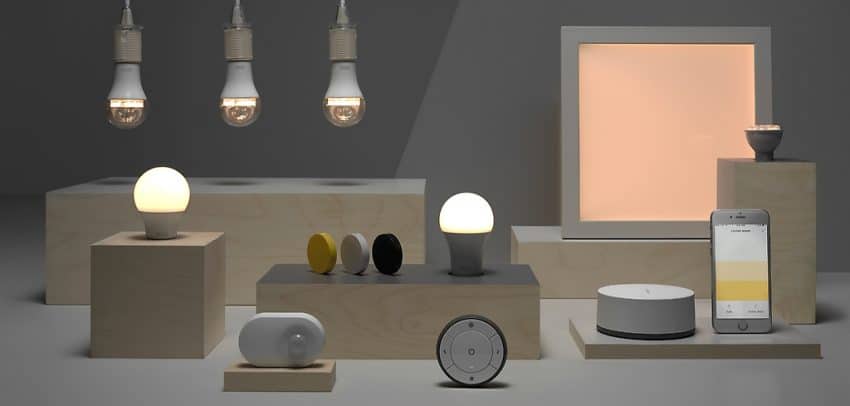
Image courtesy of Ikea.com
2. Buying smart heating product
Great for managing the temperature of your home when you’re at home or away, smart thermostats or heating devices are must-haves to create a smart home. These can help save energy and are convenient to turn on, off and control temperatures when needed. Some smart thermostats can self-regulate your home heating depending on the weather outside and time of year, or you can set it to come on or turn off at certain times of the day. Smart heating products such as electric blankets can automatically turn off after a certain amount of time or when the temperature reaches a certain amount.
3. Smart air conditioning
The line of smart temperature devices also extends to air conditioning units and, during the hotter months of the year, can help save you money when turning your home into a smart home. Instead of buying a fan or unit, a smart air-con machine can be controlled by your phone or self-regulate depending on what you need.
4. Getting a smart meter
Getting a smart meter doesn’t automate electricity or energy usage, but it’s good to have when making a smart home if you don’t already have one. These are usually free to get, so they are great for cheap smart homes; you just need to talk to your energy provider for more information. These automatically send your usage to your provider and create more accurate bills, but a benefit to these is how you can see your usage in real-time and the estimated cost on your phone. These naturally help to save more money; for more, check out our blog post on Everything You Need To Know About Smart Meters.
5. Using Smart Plugs
Giving you the ability to control the power into your appliances is arguably the biggest benefit of creating a smart home. So, smart plugs can be a great way to create a smart home on a budget and avoid buying a whole house of new electronics. There are sockets coming out now that look like regular plugs but with smart technology built in. These are great, and certainly embed smarts into your home seamlessly and invisibly. Sockets are great choices if you own your own property, but they can be pricey.
A good alternative for an affordable smart home is TP-Link smart plugs; these connect directly to your normal sockets to give your devices smart power. They can be remote controlled through the Kasa app, and voice controlled with Alexa or Google Assistant. You can even programme devices to turn on at certain times. Imagine having your kettle programmed to boil just as you’re heading downstairs each morning!
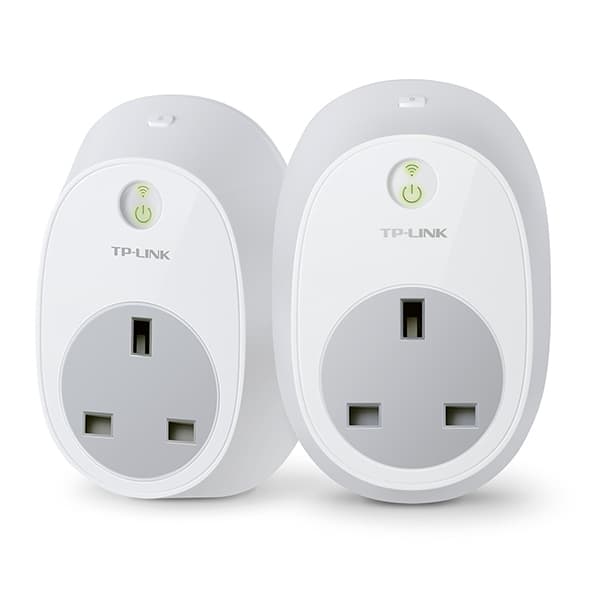
Image courtesy of TP-link.com
6. Buying Smart White Goods
When making your home into a smart home, one aspect you might not think about is white goods, so your fridge, washing machine and other types of white goods. If you have the budget for it, this is well worth it, but buying smart white goods can be expensive. Smart fridges can help you know whether you need to pick up milk on your way home, check the fridge on the go and link to programmes to check use-by-dates and connect to shopping lists.
However, this option is more expensive, but sometimes you don’t have to work harder, just smarter. For turning your home into a smart home on a budget, try installing a smart camera in your fridge. Sounds silly, but it can connect to your phone, and you can see exactly what kind of food you have in while you’re out. Of course, you don’t have to do this, and you could go old-fashioned and make lists of what you need as you go.
Other white goods you can buy, if you have the budget are smart dishwashers, washing machines and dryers. These just are equipped with smart technology and can connect to an app on your phone to monitor the type, cycle status, as well as to turn on and off.
7. Smart home appliances
Another way to create a smart home is to buy appliances built with smart technology. Deck out your kitchen with smart ovens, grills, air fryers, instant pots or coffee makers. These smart devices are great if you rent or own your own house and can usually be controlled with buttons, a remote or from your phone, depending on which one you buy. These also help to save energy, so while they are higher price points, they make your smart home affordable in the long run as they naturally use less energy.
You can also make other rooms in your house smart with devices such as smart technology beds, mattress covers, smart clocks, scales, bikes and exercise equipment, lawnmowers, and even remote control hoovers.
8. Home Security Cameras & Smart Doorbells
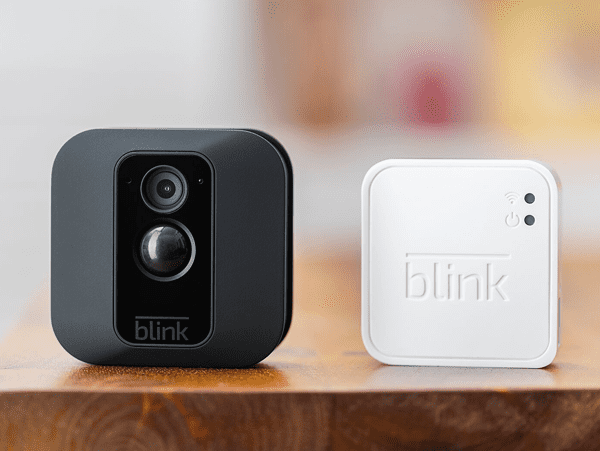
Image courtesy of blinkforhome.co.uk
Improving your home security is one of the most practical benefits of smart technology. Traditional CCTV sets are still remarkably expensive despite being cumbersome to retrieve footage from when you need it. Smart technology can give you an upgrade for your smart home. You can find smart security cameras which come with motion sensors and can connect to your phone, so you can keep watch wherever you are. They can also notify you if they detect movement in the area. For creating a smart home, these can lead to the more expensive side of the budget but they are worth having either inside or outside your house.
You can also buy smart doorbells. Again, these aren’t cheap. But, you’ll get alerts sent to your phone whenever you have a visitor. You can see who’s at your door and even talk to them if you’re not in through the app, which makes it easier for when you miss a delivery. And it’s easy to change the chime noise, or disable it altogether if needed.
9. Smart Smoke and Leak Detectors
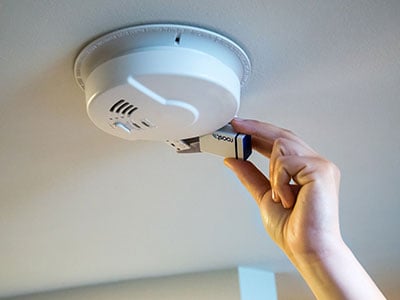
Image courtesy of getroost.com
Another security-related smart home update you can make is your smoke detectors. While a smart smoke detector will set you back anything up to £150, there is a hack to upgrade yours as part of a smart home on a budget. A smart battery by Roost will fit straight into your regular smoke detector and upgrade it to a smart one. You’ll have notifications sent to your phone to let you know when the battery is low. Equally, you’ll get notifications if your alarm sounds while you’re away. You can also easily silence it when it goes off by mistake, so no more fire drills over burnt toast!
Roost also make leak detectors which, when placed around your toilet, sinks and water heater, will let you know if anything springs a leak. They’ll also alert you if your pipes freeze in the winter – something us Brits are all too familiar with! This is obviously not an essential home purchase, but sometimes, a small expense now can save you a big one later!
10. Smart home hubs
Even better than controlling smart ppliances on your phone is controlling via voice-activated devises, such as Alexa, Siri, or Echo. These home devices can be connected to other devices in your home such as the smart plugs, lights, electronics, etc. Making it easier for you to control and save money, these make great all-in-one kits to turn your home into a smart home. And you can even use it for other aspects of your life, such as taking commands, questions, organising your calendar, calls and texts as well as providing alerts, or just making your life easier when you need hands-free.
11. Smart TVs and audio systems
Great for avid TV watchers or music listeners, having a smart TV or smart speakers are great for smart homes. While these can be more expensive, they can be combined with smart home kits and hubs for a more affordable smart home. Smart TVs can be controlled from your phone, and come with several different applications all in one place, and some even are voice-activated. Whereas smart speakers and audio systems can be controlled by your phone or even through home hubs such as Amazon or Alexa. You can even find multi-room audio systems to play music in every room of the house, of course these are at higher price points.
12. Installing a Smart Irrigation System
If you have your own garden or outdoor area, you can also make that part of your house smart, with irrigation systems. These can be more expensive, but help to ensure your garden gets enough water during the year so it’s worth investing in it if it’s within the budget. Whether it’s installing a full system or a house-tap timer, you can control these from apps as well.
Making A Smart Home
Whether you are turning your home into a smart home and embracing the future of technology, or you’re just wanting to make a few upgrades, there are ways to do both. When making your smart home on a budget just make sure that you shop smarter and not harder, there are a lot of cheap and affordable choices out there. And even if you splurge a little, creating a smart home helps to save you money in the future so it’ll pay off. To help you save money where you can, check out more posts on our Good Vibes blog for more money-savvy tips.
